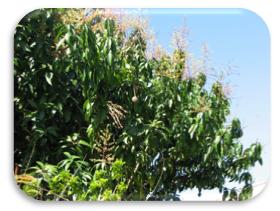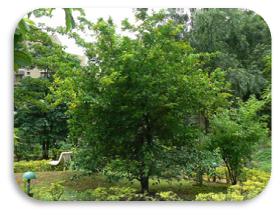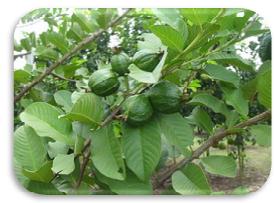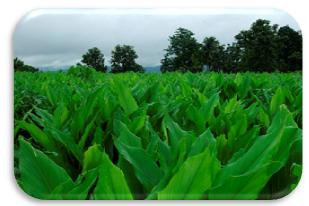 |
||||||||||||||||||||||||||||||||||||||||||||||||||||||||||||||||||||||||||||||||||||||||||||||||||||||||||||||||||||||||||||||||||||||||||||||||||||||||||||||||||||||||||||||||
| Organic Farming :: Organic Inputs and Techniques | ||||||||||||||||||||||||||||||||||||||||||||||||||||||||||||||||||||||||||||||||||||||||||||||||||||||||||||||||||||||||||||||||||||||||||||||||||||||||||||||||||||||||||||||||
Panchagavya
Panchagavya, an organic product has the potential to play the role of promoting growth and providing immunity in plant system. Panchagavya consists of nine products viz. cow dung, cow urine, milk, curd, jaggery, ghee, banana, Tender coconut and water. When suitably mixed and used, these have miraculous effects.
Mix the above two ingredients thoroughly both in morning and evening hours and keep it for 3 days
After 3 days mix cow urine and water and keep it for 15 days with regular mixing both in morning and evening hours. After 15 days mix the following and panchagavya will be ready after 30 days.
All the above items can be added to a wide mouthed mud pot, concrete tank or plastic can as per the above order. The container should be kept open under shade. The content is to be stirred twice a day both in morning and evening. The Panchagavya stock solution will be ready after 30 days. (Care should be taken not to mix buffalo products. The products of local breeds of cow is said to have potency than exotic breeds). It should be kept in the shade and covered with a wire mesh or plastic mosquito net to prevent houseflies from laying eggs and the formation of maggots in the solution. If sugarcane juice is not available add 500 g of jaggery dissolved in 3 liter of water.
Physico chemical and biological properties of Panchagavya
Physico-chemical properties of Panchagavya revealed that they possess almost all the major nutrients, micro nutrients and growth harmones (IAA & GA) required for crop growth. Predominance of fermentative microorganisms like yeast and lactobacillus might be due to the combined effect of low pH, milk products and addition of jaggery/sugarcane juice as substrate for their growth. The low pH of the medium was due to the production of organic acids by the fermentative microbes as evidenced by the population dynamics and organic detection in GC analysis. Lactobacillus produces various beneficial metabolites such as organic acids, hydrogen peroxide and antibiotics, which are effective against other pathogenic microorganisms besides its growth. GC-MS analysis resulted in following compounds of fatty acids, alkanes, alconol and alcohols.
3. Beneficial effects of Panchagavya on commercial crops
Generally panchagavya is recommended for all the crops as foliar spray at 30 % level (3 litre panchagavya in 100 litres of water). Spray system 3% solution was found to be most effective compared to the higher and lower concentrations investigated. Three litres of Panchagavya to every 100 litres of water is ideal for all crops. The power sprayers of 10 litres capacity may need 300 ml/tank. When sprayed with power sprayer, sediments are to be filtered and when sprayed with hand operated sprayers, the nozzle with higher pore size has to be used. Flow system The solution of Panchagavya can be mixed with irrigation water at 50 litres per hectare either through drip irrigation or flow irrigation Seed/seedling treatment 3% solution of Panchagavya can be used to soak the seeds or dip the seedlings before planting. Soaking for 20 minutes is sufficient. Rhizomes of Turmeric, Ginger and sets of Sugarcane can be soaked for 30 minutes before planting. Seed storage 3% of Panchagavya solution can be used to dip the seeds before drying and storing them. Periodicity
Time of application of Panchagavya for different crops is given as follows
Effect of Panchagavya Leaf Plants sprayed with Panchagavya invariably produce bigger leaves and develop denser canopy. The photosynthetic system is activated for enhanced biological efficiency, enabling synthesis of maximum metabolites and photosynthates. Stem The trunk produces side shoots, which are sturdy and capable of carrying maximum fruits to maturity. Branching is comparatively high. Roots The rooting is profuse and dense. Further they remain fresh for a long time. The roots spread and grow into deeper layers were also observed. All such roots help maximum intake of nutrients and water. Yield There will be yield depression under normal circumstances, when the land is converted to organic farming from inorganic systems of culture. The key feature of Panchagavya is its efficacy to restore the yield level of all crops when the land is converted from inorganic cultural system to organic culture from the very first year. The harvest is advanced by 15 days in all the crops.It not only enhances the shelf life of vegetables, fruits and grains, but also improves the taste. By reducing or replacing costly chemical inputs, Panchagavya ensures higher profit and liberates the organic farmers from loan. Drought Hardiness A thin oily film is formed on the leaves and stems, thus reducing the evaporation of water. The deep and extensive roots developed by the plants allow to withstand long dry periods. Both the above factors contribute to reduce the irrigation water requirement by 30% and to ensure drought hardiness. 5. Panchagavya for animal health Panchagavya is a living elixir of many micro organisms, bacteria, fungi, proteins, carbohydrates, fats, amino acids, vitamins, enzymes, known and unknown growth promoting factors micronutrients trace elements antioxidant and immunity enhancing factors. When taken orally by animals and human beings, the living micro organisms in the Panchagavya stimulate the immune system and produce lot of antibodies against the ingested microorganisms. It acts like vaccine. This response of the body increases the immunity of animals and humans and thus helps to prevent illness and cures disease. It slows down the aging process and restores youthfulness. The other factors present in Panchagavya improve apetite, digestion and assimilation and elimination of toxins in the body. Constipation is totally cured. Thus the animals and humans become hale and healthy with shining hair and skin. The weight gains are impressive. Pigs Panchagavya was mixed with drinking water or feed at the rate of 10 ml – 50 ml/pig depending upon the age and weight. The pigs became healthy and disease free. They gained weight at a faster rate. The feed to weight conversion ratio increased tremendously. This helped the piggery owners to reduce the feed cost and to get very good returns due to increased weight. Goats and Sheep The goats and sheep became healthy and gained more weight in a short period after having administered 10 ml to 20 ml Panchagavya per animal per day depending upon the age. Cows By mixing Panchagavya with animal feed and water at the rate of 100 ml per cow per day, cows become healthier with increased milk yield, fat content and SNF. The rate of conception increased. The retained placenta, mastitis and foot and mouth disease became things of the past. Now the skin of the cow is shiny with more hair and looks more beautiful. Instead of spraying urea on paddy straw (hay) before staking, a few farmers sprayed the 3 percent solution of Panchagavya, layer after layer during the staking and allowed it to ferment. The cows preferred such hay compared to unsprayed hay stock. Poultry When mixed with the feed or drinking water at the rate of 1 ml per bird per day, the birds became disease-free and healthy. They laid bigger eggs for longer periods. In broiler chickens the weight gain was impressive and the feed-to-weight conversion ratio improved. Fish Panchagavya was applied daily with fresh cow dung in fish ponds. It increased the growth of algae, weeds and small worms in the pond, thus increasing the food availability to fish. The only precaution is that fresh water must be added to the ponds at frequent intervals. Otherwise, the growth of algae, weeds and other organisms will compete with the fish for available soluble oxygen in water. Alternatively, mechanical agitators can also be used to increase the oxygen content in the water. In ten months time each fish grew to a weight of 2 to 3 kgs. With reduced death rate of small fingerlings and increased weight of marketable fish, the fisheries became more profitable. Source |
||||||||||||||||||||||||||||||||||||||||||||||||||||||||||||||||||||||||||||||||||||||||||||||||||||||||||||||||||||||||||||||||||||||||||||||||||||||||||||||||||||||||||||||||
Home | Schemes | Trainings | Related Information | Gallery | Contact | Disclaimer |
||||||||||||||||||||||||||||||||||||||||||||||||||||||||||||||||||||||||||||||||||||||||||||||||||||||||||||||||||||||||||||||||||||||||||||||||||||||||||||||||||||||||||||||||
© All Rights Reserved. TNAU-2016 |
||||||||||||||||||||||||||||||||||||||||||||||||||||||||||||||||||||||||||||||||||||||||||||||||||||||||||||||||||||||||||||||||||||||||||||||||||||||||||||||||||||||||||||||||













